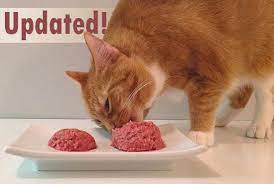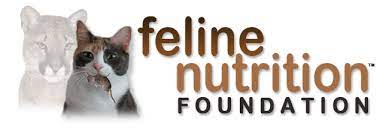Absolutely, let's dive deep into the multifaceted realm of "Feline Feasts," exploring the intricate nuances of cat food, nutritional needs, and dietary considerations for our feline friends:
1. Understanding Feline Nutrition
Essential Nutrients: Detailed breakdown of vital nutrients cats require—proteins, fats, carbohydrates, vitamins, minerals, and water—and their roles in a cat's overall health.
Unique Dietary Needs: Highlighting the obligate carnivore nature of cats, emphasizing the importance of high-quality proteins, amino acids (like taurine), and the minimal need for carbohydrates.

2. Life Stage-Specific Nutrition
Kitten Nutrition: Tailored diets for kittens focusing on growth, development, and the significance of nutrients like DHA for brain development.
Adult and Senior Cats: Dietary adjustments for adult and senior cats, addressing changing metabolism, weight management, joint health, and age-related concerns.
3. Types of Cat Food
Commercial Cat Foods: Exploring various types—dry, wet, semi-moist—and deciphering labels to choose high-quality commercial cat foods with adequate nutritional value.
Raw Diets: Insights into raw feeding—benefits, risks, and considerations for a balanced raw diet while ensuring safety for both cats and owners.
4. Homemade and Specialty Diets
Homemade Meals: Guidelines for preparing balanced homemade cat diets, understanding nutrient requirements, and potential pitfalls in homemade diets.
Special Diets: Understanding therapeutic diets for specific health issues like urinary tract health, weight management, allergies, and gastrointestinal concerns.
5. Feeding Practices and Portion Control
Meal Frequency and Portions: Guidance on feeding schedules, portion control, and the importance of maintaining an ideal body condition score for optimal health.
Free-Feeding vs. Scheduled Feeding: Pros and cons of both methods, considering individual cat preferences and lifestyle.
6. Treats, Supplements, and Food Additives
Healthy Treat Options: Choosing nutritious and safe treats, understanding the impact of treats on a cat's overall diet and weight management.
Supplement Considerations: When and how to incorporate supplements—such as omega-3 fatty acids, probiotics, or joint supplements—into a cat's diet.
7. Managing Common Dietary Concerns
Obesity and Weight Management: Strategies for preventing and managing obesity through diet, exercise, and lifestyle changes.
Food Allergies and Intolerances: Identifying allergens, choosing hypoallergenic diets, and managing allergic reactions through diet adjustments.
8. Hydration and Water Consumption
Importance of Water: Understanding a cat's low thirst drive and the significance of adequate hydration, exploring ways to encourage increased water intake.
Wet Food vs. Dry Food: Comparing moisture content and the role of wet food in maintaining hydration levels.
9. Feeding Behavior and Mealtime Environment
Mealtime Behaviors: Understanding cat behaviors related to feeding—grazing, hunting behaviors, food preferences—and addressing picky eating habits.
Feeding Environment: Creating a stress-free, quiet, and safe feeding environment to promote healthy eating habits and reduce mealtime stress.
10. Transitioning Diets and Dietary Changes
Gradual Diet Changes: Methods for smoothly transitioning cats between diets to minimize digestive upset and ensure acceptance of new foods.
Managing Diet Changes: Addressing challenges in implementing dietary changes, troubleshooting refusal or acceptance issues.
11. Monitoring and Adjusting Diets
Signs of Good Health: Understanding signs of a well-nourished cat—healthy coat, energy levels, and normal litter box habits—as indicators of a balanced diet.
Regular Assessments: Importance of periodic veterinary check-ups, assessing diet adequacy, and adjusting diets based on changing health or lifestyle factors.
12. Cultural and Regional Diet Considerations
Cultural Variances: Exploring cultural differences in cat diets, regional preferences, and how cultural factors influence feeding practices.
Regional Dietary Challenges: Addressing dietary challenges specific to certain regions—availability of specific foods, climate impacts, and nutritional variations.
13. Ethical and Sustainability Considerations
Ethical Sourcing: Understanding ethical considerations in cat food production, exploring brands committed to animal welfare and sustainable sourcing.
Sustainable Diets: Exploring sustainable cat food options—environmentally friendly packaging, eco-conscious ingredients, and reduced ecological footprints.
14. Consumer Awareness and Label Interpretation
Decoding Labels: Understanding cat food labels, recognizing key nutritional information, ingredients, and avoiding misleading marketing tactics.
Consumer Rights and Advocacy: Empowering cat owners to make informed choices, promoting transparency in the pet food industry, and advocating for quality standards.
15. Research and Innovations in Feline Nutrition
Advancements in Nutrition: Exploring ongoing research, innovations, and emerging trends in feline nutrition and dietetics.
Technological Interventions: Integration of technology—smart feeders, nutritional apps, and dietary monitoring tools—to enhance feline nutrition and health management.
16. Cultural Significance and Symbolism in Feline Feeding
Historical Perspectives: Exploring historical and cultural significance associated with feline feeding, rituals, and symbolism around food.
Cultural Evolution: Examining how cultural perceptions and attitudes toward cat nutrition have evolved over time, impacting feeding practices today.
17. Evaluating Pet Food Industry Practices
Industry Standards: Understanding regulatory standards, quality control measures, and industry certifications ensuring pet food safety and quality.
Ethical Dilemmas: Addressing ethical concerns in the pet food industry, controversies, and advocacy for ethical practices in manufacturing and marketing.
18. Preventive Healthcare Through Nutrition
Disease Prevention: Exploring how proper nutrition plays a role in preventing common feline health issues, supporting immune function, and overall disease prevention.
Role of Diet in Longevity: Understanding the connection between diet, longevity, and promoting a cat's healthy lifespan.
19. Culinary Variations and Cat Cuisine
Gourmet and Specialty Foods: Exploring specialized, gourmet cat foods, trends in cat cuisine, and the role of luxury diets in feline feeding.
DIY Cat Food Culture: Engaging in homemade diets, unique recipes, and the DIY culture in cat food preparation.
20. Feline Nutrition Education and Advocacy
Educational Outreach: Initiatives promoting feline nutrition education among pet owners, veterinarians, and fostering awareness about the significance of balanced diets.
Advocacy for Feline Welfare: Supporting initiatives advocating for improved nutritional standards, consumer education, and ethical practices in the pet food industry.
This comprehensive exploration of "Feline Feasts" aims to be an exhaustive guide, offering in-depth insights and practical advice for cat owners to navigate the intricate world of feline nutrition. It stands as a testament to the commitment to providing the best nourishment for our feline companions, ensuring their health, vitality, and overall well-being.



You must be logged in to post a comment.